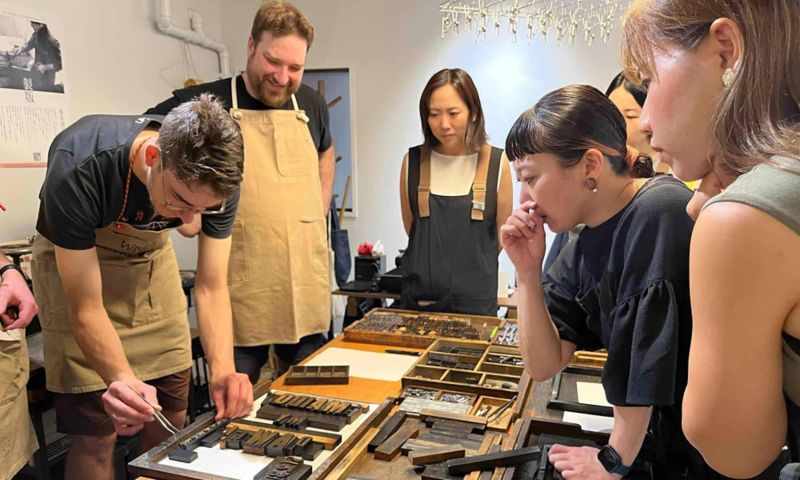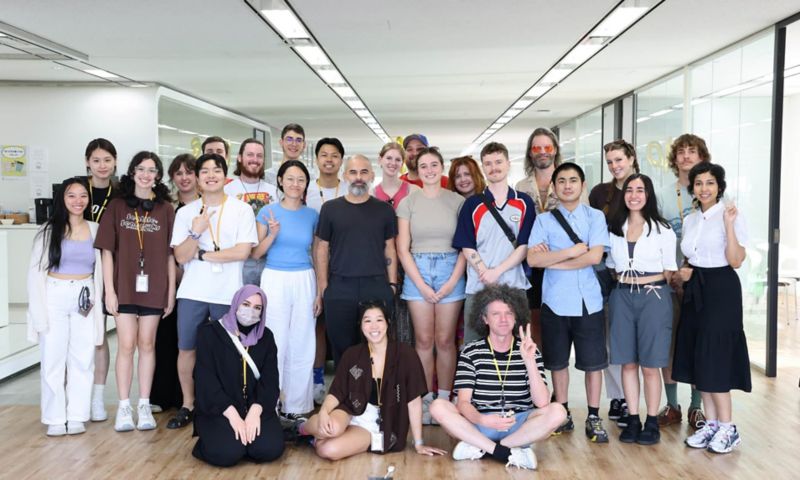A decades-long commitment by the Collie Print Trust to education is giving graphic design students a global perspective on their work.
A longstanding relationship with deep roots in Australia’s printing industry is creating extraordinary experiences for RMIT students today.
The impact of the Collie Print Trust’s remarkable generosity is a fitting legacy for the family behind prominent Australian ink manufacturer R. Collie & Co, which operated from 1893 until 1979.
Barbara Collie, daughter of the company’s founder Robert Collie, established the Trust in 1967 in memory of her father and brothers. As the printing industry has evolved, so has the Trust’s support – from help for printing apprentices in the 1960s, to assistance for today’s graphic design students at RMIT.
In recent years, the funds gifted to RMIT have supported – among other initiatives – an annual study tour for around 20 RMIT students in their final semester of the Associate Degree in Graphic Design. Groups have travelled as far afield as the US, UK, Spain, Switzerland and Germany.

In 2023, the tour went to Tokyo and Osaka in Japan, where students explored ancient traditions as well as the country’s ultra-modern design culture.
The packed schedule included workshops in traditional techniques such as wood carving, hands-on silk screen and letterpress printing, meetings with cutting-edge digital artists, and the chance to brainstorm design ideas with the creative director and staff of a global marketing agency.
Dale Nason, who teaches graphic and product design at RMIT, led the 2023 tour with colleague Ben Mastwyk. He said it was not just an excursion for the group, but aimed to create industry connections and help students develop through immersive experiences and work integrated learning.
“One of our main goals was to take the intangible and really get hands-on,” he said.
“For example, before we left, the students prepared some pre-press files for printing in Risograph, which has become a cult printing technique. Then, in Japan, the students saw their jobs being produced and had a hand in collation.
We showed them that you can go and not just order print but go and get to know the printer and turn printing into a product.
Dale said engaging with industry helped students feel more ready to enter the world of work, and gave staff ideas on areas where communities of practice could be developed.
For Casey Kurec, one of the students selected for the Japan tour, the experience made him think about his practice in new ways.
“Graphic design is all about communication, first and foremost, and what really struck me was how much could still be communicated without a common language. It really helped us think about communicating visually, making things simple to understand, and being clear about a message,” he said.
“To go to a place like Japan which has an incredible design culture where they mix futuristic cutting-edge elements with really traditional stuff, and to be travelling with a group of like-minded people that are all there for design experiences… it was a once-in-a-lifetime opportunity.”

He added that there were practical benefits which he hoped would help as he approached graduation and started to look for work in the industry.
“To actually be in a design studio with a creative director, presenting an idea to him, and getting feedback in the same way he would give feedback to the designers working for him was an invaluable experience,” he said.
My Instagram is now full of people I’ve met in Japan who are working graphic designers, who I can communicate with and potentially work with in the future.
Annette Cook, Program Manager of Graphic Design at RMIT, has worked with the Collie Print Trust on the program for many years. She said it “acknowledges and celebrates” the diversity of graphic design print practice – to the benefit of students and teachers.
“During the intensive experience the students develop strong connections with each other, whilst gaining a global perspective on graphic and communication design. Extraordinary links with international studios, designers and creatives have been made,” she said.
“It has expanded our horizons and been such a positive influence on all we do in graphic design.”

Life-changing scholarships
Give to scholarships and help create life-changing opportunities for students facing barriers to education.


